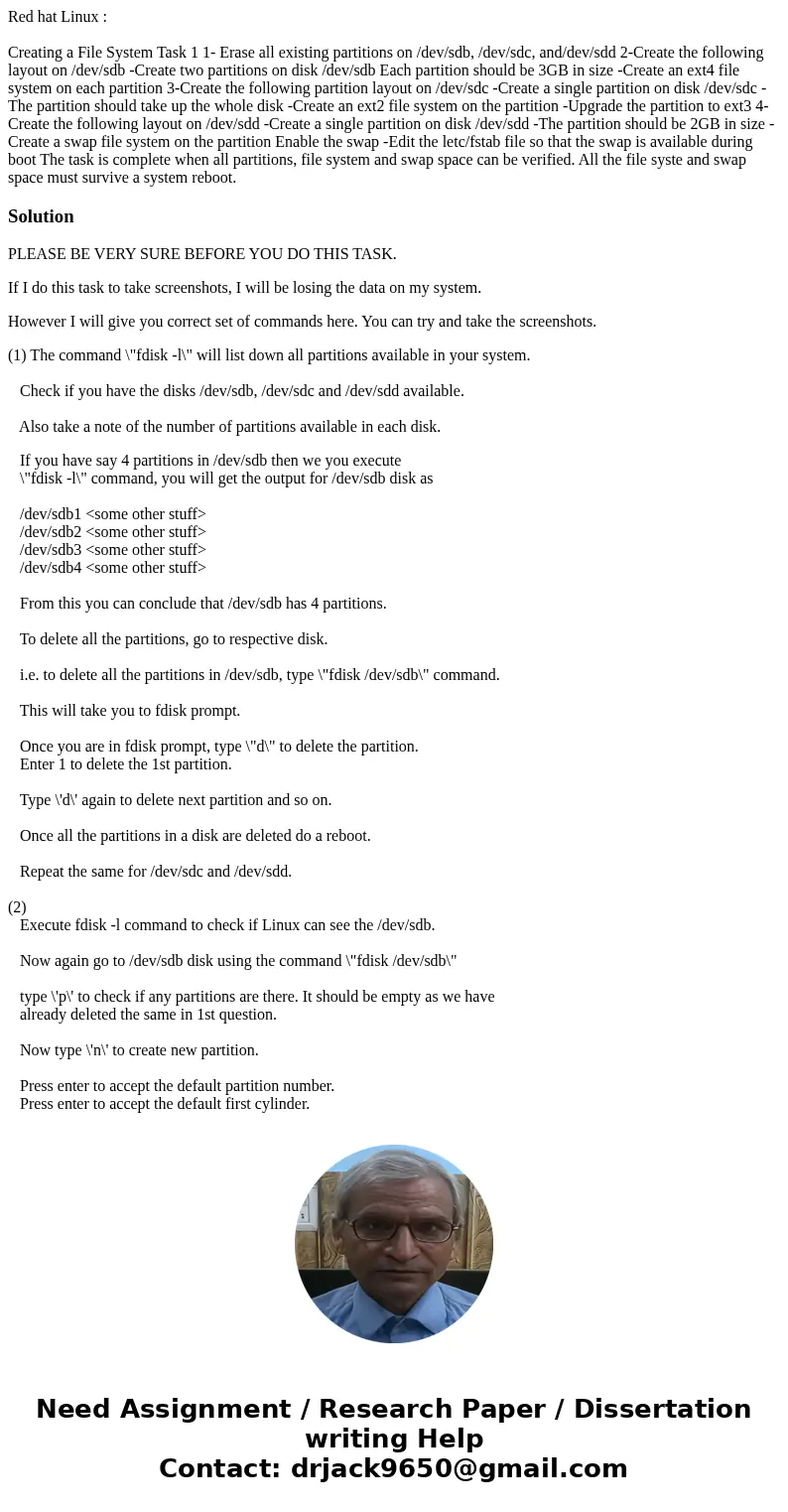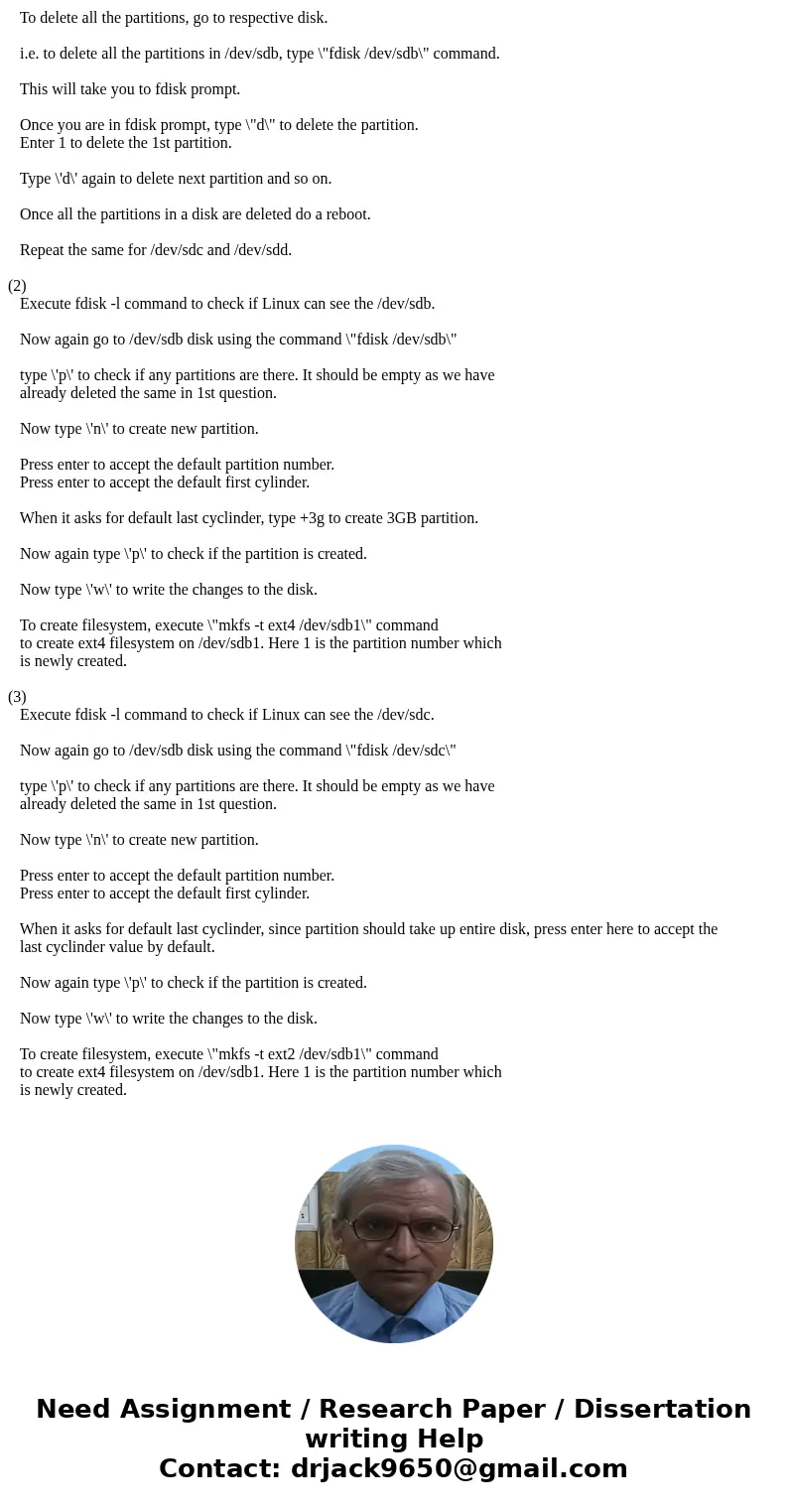Red hat Linux Creating a File System Task 1 1 Erase all exi
Solution
PLEASE BE VERY SURE BEFORE YOU DO THIS TASK.
If I do this task to take screenshots, I will be losing the data on my system.
However I will give you correct set of commands here. You can try and take the screenshots.
(1) The command \"fdisk -l\" will list down all partitions available in your system.
Check if you have the disks /dev/sdb, /dev/sdc and /dev/sdd available.
Also take a note of the number of partitions available in each disk.
If you have say 4 partitions in /dev/sdb then we you execute
\"fdisk -l\" command, you will get the output for /dev/sdb disk as
/dev/sdb1 <some other stuff>
/dev/sdb2 <some other stuff>
/dev/sdb3 <some other stuff>
/dev/sdb4 <some other stuff>
From this you can conclude that /dev/sdb has 4 partitions.
To delete all the partitions, go to respective disk.
i.e. to delete all the partitions in /dev/sdb, type \"fdisk /dev/sdb\" command.
This will take you to fdisk prompt.
Once you are in fdisk prompt, type \"d\" to delete the partition.
Enter 1 to delete the 1st partition.
Type \'d\' again to delete next partition and so on.
Once all the partitions in a disk are deleted do a reboot.
Repeat the same for /dev/sdc and /dev/sdd.
(2)
Execute fdisk -l command to check if Linux can see the /dev/sdb.
Now again go to /dev/sdb disk using the command \"fdisk /dev/sdb\"
type \'p\' to check if any partitions are there. It should be empty as we have
already deleted the same in 1st question.
Now type \'n\' to create new partition.
Press enter to accept the default partition number.
Press enter to accept the default first cylinder.
When it asks for default last cyclinder, type +3g to create 3GB partition.
Now again type \'p\' to check if the partition is created.
Now type \'w\' to write the changes to the disk.
To create filesystem, execute \"mkfs -t ext4 /dev/sdb1\" command
to create ext4 filesystem on /dev/sdb1. Here 1 is the partition number which
is newly created.
(3)
Execute fdisk -l command to check if Linux can see the /dev/sdc.
Now again go to /dev/sdb disk using the command \"fdisk /dev/sdc\"
type \'p\' to check if any partitions are there. It should be empty as we have
already deleted the same in 1st question.
Now type \'n\' to create new partition.
Press enter to accept the default partition number.
Press enter to accept the default first cylinder.
When it asks for default last cyclinder, since partition should take up entire disk, press enter here to accept the
last cyclinder value by default.
Now again type \'p\' to check if the partition is created.
Now type \'w\' to write the changes to the disk.
To create filesystem, execute \"mkfs -t ext2 /dev/sdb1\" command
to create ext4 filesystem on /dev/sdb1. Here 1 is the partition number which
is newly created.


 Homework Sourse
Homework Sourse